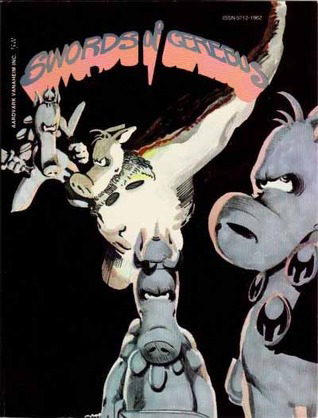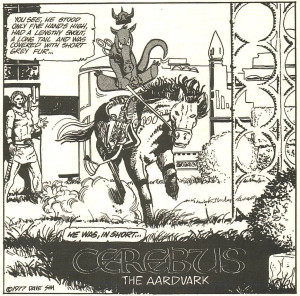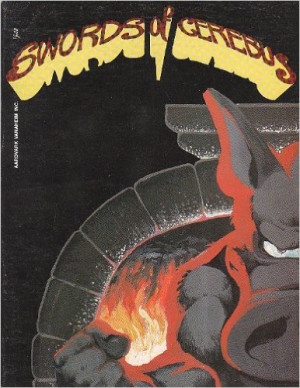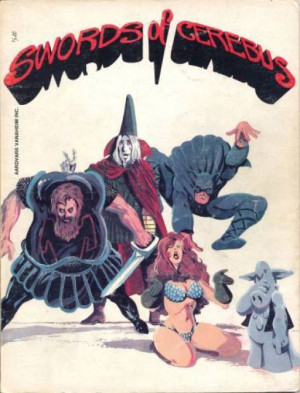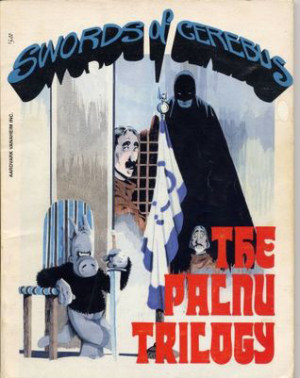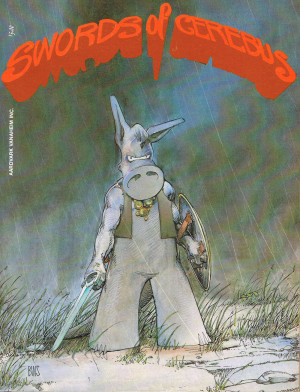Review by Roy Boyd
Cerebus creator and self-publisher Dave Sim vowed from the outset he would always keep his entire back catalogue in print. Swords of Cerebus was how he first chose to do that, with five volumes collecting four issues of the comic into one nice package, and a sixth gathering five issues. After the success of High Society, published in one massive 600-page book, Sim abandoned the Swords format and instead collected the first 25 issues into one similarly-sized volume: Cerebus.
Cerebus started out as a blatant ‘homage’ to Robert E. Howard’s Conan stories, and more specifically Marvel artist Barry Windsor-Smith’s work on the character. Sim clearly isn’t in the same league as the artist he attempts to emulate, although his style develops quickly and was soon to move beyond the restrictions of the swords and sorcery genre.
The first story, ‘The Flame Jewel’ (only so-called for the Cerebus collection, it was originally untitled) is action-packed, very much in the Conan mould, that quickly establishes Cerebus as a fighter of great skill, something perhaps not readily apparent from his appearance. As someone who always refers to himself in the third person. Sim wisely has his aardvark face-off against a shadow beast for his first fight (it’s easy to draw) and the story satisfies on every level, at least as far as an unambitious funny animal fantasy spoof.
In the introduction to the second story, ‘Captive in Boreala’, Sim admits that part of the attraction of was the setting, with barren snowy wastes much easier to draw than buildings and lots of people. This story is also the first time, though not the last, that we see the famed Earth-Pig Snout Punch!
For ‘Song of Red Sophia’, Sim moved his attention to another Marvel artist, Frank Thorne, and his version of another Robert E. Howard character, Red Sonja. Thorne actually appears depicted in the story, as Henrot the wizard, Red Sophia’s father.
‘Death’s Dark Tread’, the final story, introduces Elrod of Melvinbone, Sim’s pastiche of Michael Moorcock’s Elric of Melniboné, with the voice and mannerisms of Foghorn Leghorn. Elrod was to prove massively popular and would return time and again.
This volume concludes with ‘The Name of the Game is Diamondback’, an eight-page standalone story (with layouts by Marshall Rogers) not included in the Cerebus collection. It’s extras like this, as well as the introductory essays and painted covers, that make it worthwhile seeking out these books, which are still widely available, and affordable.
Although these early stories are undeniably very rough, especially the art, they have loads of youthful charm and enthusiasm. Furthermore, even at this stage, it was clear that Sim was a writer of some skill, especially good at humour, who told well thought-out stories with a great deal of wit and intelligence.
